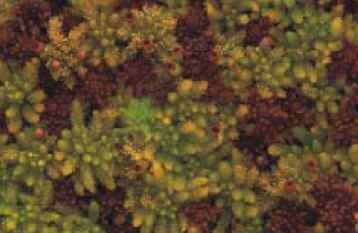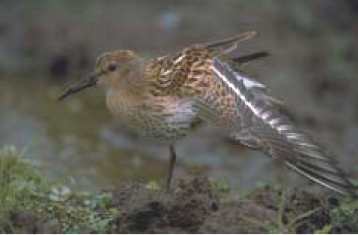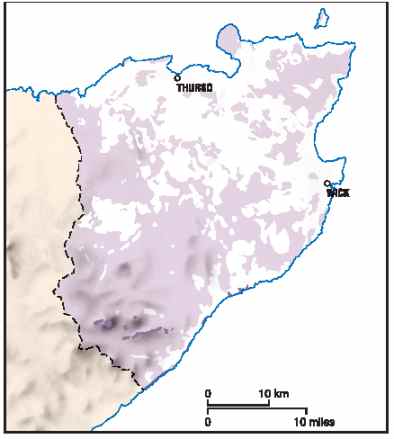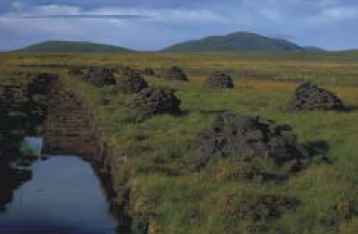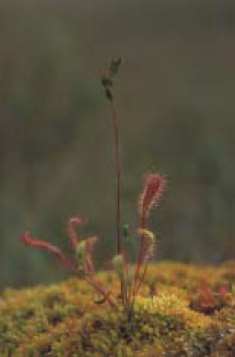|
BOG, MOOR AND HILL Introduction The Caithness landscape is characteristically flat, dominated by wide open skies and long views towards distinctive hills. Together with Sutherland, Caithness is internationally important for its vast expanses of blanket bog, and the two counties hold the largest and most intact areas of this habitat in the World, some 4,000 km2. Caithness bog, moor and hill land is used primarily for sporting interests, including deer stalking and to a lesser extent grouse shooting. Fishing for salmon or trout takes place in scattered rivers and lochs. Sheep are grazed and peat is cut on the edges of the moors for use as local fuel.
Blanket bog Habitats and species Caithness’ blanket bogs have developed in an undisturbed way for thousands of years. Although the annual rainfall is not particularly high (around 1,000 mm per year) the ground can become waterlogged due to its flatness and the low evaporation rate in the cloudy, cool summers. This makes Caithness ideal for the growth of new peat, formed by the death of mosses and sedges and their preservation as they sink into the airless brown water. The peat has accumulated into thick spongy blankets that retain the water and perpetuate the conditions for further peat development. The plants that live on the permanently wet peat are special to this habitat, and the dominant plants include the sphagnum mosses, the cotton grasses, cross-leaved heath and bog asphodel. A rich and varied invertebrate fauna provides a food source for some specialised bird species including common scoter, greenshank, dunlin and wood sandpiper. The birds get some protection from predators, which prefer harder ground and tend to live and nest in trees and rocky areas.
Main issues
|
Planting conifer trees, with their associated plough furrows, has damaged some bogs. The ground is unsuitable for tree growth and recently trees have been removed and the furrows blocked up to restore the water-holding capacity of the bogs. Crows and foxes are damaging to the bird populations, and their numbers have increased with the spread of plantation forestry across the peatlands in the 1970s and 1980s. Human visitors are a source of damage. A footstep can take several years to grow out. Dunlin wing stretching
Current biodiversity projects Scottish Natural Heritage has been running a Peatland Management Scheme for over ten years. The Scheme pays land managers to manage the peatlands according to an agreed plan, and is now being taken forward under SNH’s Natural Care Scheme. The Royal Society for the Protection of Birds manages an extensive peatland reserve at Forsinard, part of which extends into Caithness. Many Primary Schools from Caithness visit the Reserve to learn about the peatlands. The LIFE Peatlands Project has undertaken a number of practical projects to raise awareness of the value of blanket bog, including drain blocking and the removal of inappropriately planted forestry and subsequent restoration of peatland. The project has also undertaken a number of awareness-raising initiatives, and is working on a land use strategy for the peatlands. Plantlife is undertaking a programme of species monitoring and conservation work at Munsary, in the heart of Caithness.
|
